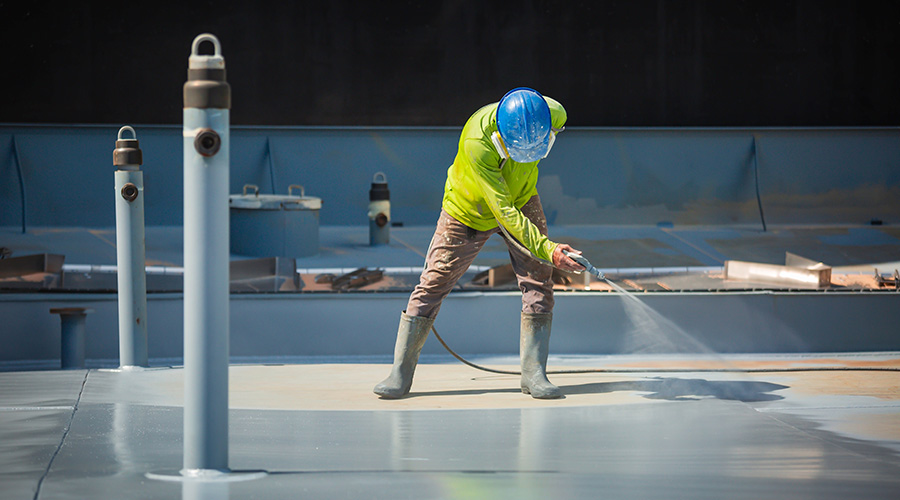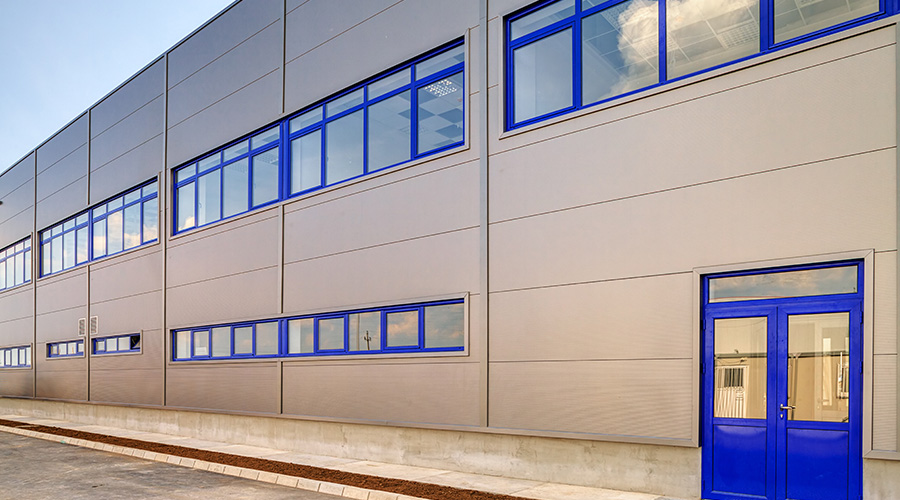Sealing in Savings
Sealants are essential for protecting concrete surfaces and holding down costs related to inspection and repair
Concrete surfaces around facilities, including parking structures and sidewalks, often leave a strong first impression on visitors, so proper maintenance is essential in protecting these areas.
Essential for this effort are concrete sealants, which are designed to protect parking structures and other concrete areas. A comprehensive inspection and repair program for these surfaces, as well as thorough sealant specification and application guidelines, will help managers ensure sealants perform as intended.
Close-up on Coatings
Concrete is a tough, long-lasting building material. But its porosity makes it vulnerable to chemicals, oil-based materials, stains and water. Sealers protect against these intruders, and they allow the concrete to breathe to release moisture.
The proper materials, used following a good inspection procedure to identify repairs needed and materials to use, applied using recommended application procedures, will result in more permanent, higher-quality repairs, at a lower cost.
There are two general types of sealants: coatings and penetrants. As the names imply, coatings seal the concrete surface, while penetrants absorb into the concrete substrate. Each has specific application purposes.
Coatings. Coatings, or film formers, impart an impervious seal to the concrete surface and prevent water or contaminant absorption. They also can provide a glossy appearance and can be used to improve appearance of materials, such as exposed aggregate concrete.
Penetrants. Penetrant sealers strengthen concrete, prevent damage from frost and salt, and guard concrete against attack by acids, mildew, mold, moisture and stains. They also can reduce radon penetration. Penetrants are very effective in treating damp, below-surface concrete areas, parking areas, storage tanks, pools, floors and walls.
Since this type of sealer penetrates below the surface and changes the concrete chemically to form a hard, insoluble material, it is permanent and unaffected by efflorescence or the abrasive affect of heavy traffic. Penetrants are available that contain no volatile organic chemicals or solvents and are nonflammable and safe to use.
Inspection and Repair Guidelines
When are repairs needed? In large cities subject to moderate winters, inspectors for departments of public works check concrete in high-density pedestrian areas every three years. The inspection frequency changes depending on weather severity.
They use the following conditions to signal when repairs are needed:
-
trip hazards due to settling or lifting
-
greater than 1/2-inch displacements in adjoining sections
-
greater than 1/2-inch cracks
-
broken or displaced curbing
-
spalling
-
permanent replacement of temporary asphalt patches.
In extreme temperature situations, some judgment is required. Freezing and thawing is particularly hard on exterior parking structures or other paved surfaces. Water and salt seep into small cracks, the water freezes and expands, and the cracks widen and sometimes form a series of interconnected cracks.
When this happens, whole sections pop loose and leave a hole. Heavy traffic expands the hole, increasing the damage. Where such conditions exist, a crack sealing program is the best solution. When the weather is moderate, workers can wire-brush the cracks, clean and wash the surface to remove loose material and chemicals, and allow the area to dry completely.
Next, they can apply a combined crack filler and sealer product with a caulking gun to exert enough pressure to force the material deep into the crack. The material is applied and smoothed to close up the crack and seal it against further water seepage.
If the network of cracks is accompanied by sinking and extreme unevenness of the broken pieces, the base material has probably shifted too much due to severe water penetration. When this condition occurs, the best solution is to replace the whole section or slab after rebuilding the base.
After removing the old concrete, workers can find out why the base eroded. Sometimes drainage is poor, and repairs will not last unless the problem is corrected. This situation is particularly true in large parking surfaces with few drains to carry away standing water, as well as where broken or blocked curb drains meet the driving surface.
Specifying Sealants
Selecting the right sealant can result in improved appearance and longer life for parking lots or other concrete surfaces. Managers should consider these issues when making such decisions:
-
floor paint removal
-
dustless shotblasting
-
ride-on belt sanding
-
mastic removal
-
underlayments for vaporproofing
-
cleaning
-
floor degreasing
-
powerscrubbing
-
acid etching.
Determine the condition. Inspect the parking area or other concrete surface to identify the condition. If cracking, holes, surface spalling, oils and stains or dusting are evident, these problem areas must be repaired and cleaned first. Then the general condition is assessed. Is the concrete new and tight, or old and porous?
Select the product. Low-concentration sealers are recommended for new concrete with a surface in good condition. Old or very porous surfaces or outdoor applications require a more concentrated sealer.
Prepare the surface. Surface tensile strength of 4,000 psi concrete has been found from tests to be as low as 75 psi. Proper preparation increases surface tensile strength and ensures a good bond with the substrate. Some techniques used to prepare concrete surfaces for sealing are:
Application. Follow the coverage recommended. Sealers have coverage rates of about 200 square feet per gallon or as little as 100 square feet for very porous concrete. A 5-gallon pail of sealer usually seals about 1,000 square feet of poured concrete surface. Be sure to use higher-concentration sealers on outdoor applications, where the concrete is very porous, where severe weather exposure exist, or if the concrete is more than 10 years old.
If tests show concrete has varying absorption rates, sealer manufacturers recommend pouring the sealer onto the surface, letting it absorb all the sealer it needs then moving the puddle to the next location and pouring additional sealer into it. The substrate will soak up all the sealer it can until it is saturated, ensuring a complete seal.
This technique is used for both penetrant and coating sealers. There are coating sealer toppings that are very hard and add a layer of protection to the surface to protect high-gloss coating finishes from abrasion.
For some applications, suppliers recommend two to three coats brushed, rolled or sprayed onto the surface. If the surface is very porous, a wait time of three hours between coatings decreases the absorption rate.
The Finer Points
Sometimes it is necessary to seal previously sealed concrete. If the substrate is in good condition but the original seal has deteriorated, a reseal might suffice. But remember, this is not the same material as the original due to chemical actions over time.
For good results, the first priority is the bonding of the sealer to the old surface, and the second priority is appearance — exactly the opposite of the original application. First, and easiest, is cleaning the area thoroughly and using a resealer product where needed. The second method is cleaning, applying a sealer stripper and then using a sealer to redo the seal.
Water drop tests after stripping will show that the stripped area is only surface-stripped. It will look much like an unsealed area, but that appearance is only surface deep if a penetrant sealer was applied initially. The recommended sealer in this case must be compatible with the original sealer for long-lasting adherence.
Fixing a Hole: Four Steps
The preparation for hole repair is the key to making lasting repairs in larger defects.
Patching holes is best done in four stages:
1. cleaning,
2. preparation,
3. filling and
4. sealing.
First, clean the surface thoroughly of all loose materials, including dust, dirt, oil and chemicals. Then apply a slurry of concrete patch material to the surface of the defect. When the area is dry, apply the filler material. Cutting vertically to a depth of as little as 1&Mac218;4-inch will produce a much more permanent bond. Feathered edges are subject to separation between the substrate and the patching material.
To obtain optimum strength, keep large patches and thick slabs moist for as long as 30 days after pouring. In addition to gaining higher tensile strength, the concrete will resist cracking better than concrete that is not cured fully. High-strength concrete patch and seal materials with a high modulus of elasticity resist separation from the substrate better.
Older concrete changes color due to chemical reaction over time, so a new patch will not match without extra preparation. The two best ways to match color are by mixing white cement with the regular gray cement and adjusting the cement-water ratio.
|
Related Topics:











